Classification
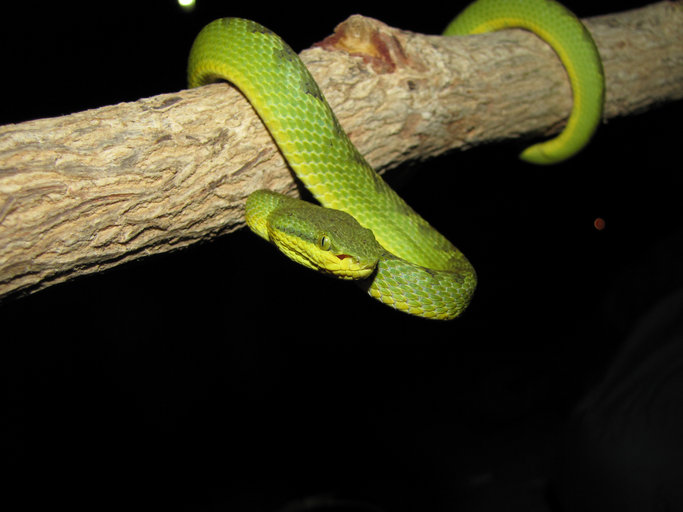 Trimeresurus gramineus goes by many names; Bamboo
pit viper, Indian tree viper, green tree viper, and Bamboo snake
are just a few of the more common names. Specifically,
Trimeresurus is Latin for "three part tail",
presumably named after the tripartite pattern of the
tail. As for the specific epithet, T.
gramineus, is Latin for grassy, probably for
the grassy color of the pit viper scales. Here is
some more information of the linage of the Bamboo pit viper.
Trimeresurus gramineus goes by many names; Bamboo
pit viper, Indian tree viper, green tree viper, and Bamboo snake
are just a few of the more common names. Specifically,
Trimeresurus is Latin for "three part tail",
presumably named after the tripartite pattern of the
tail. As for the specific epithet, T.
gramineus, is Latin for grassy, probably for
the grassy color of the pit viper scales. Here is
some more information of the linage of the Bamboo pit viper.
Domain: Eukarya
Bamboo pit vipers fall into the Eukarya domain because they
posses a true nucleus and have membrane bound organelles.
Kingdom: Animalia
The Bamboo pit vipers are in the Animalia kingdom because they
are multicellular, motile organisms that lack cell walls, and are hetertrophic.
Phylum: Chordate
As members of the Chordate phylum, Bamboo pit vipers at one point in
their life cycle have pharyngeal gill slits, a postanal tail, a
dorsal nerve cord, a notocord, and a thyroid gland.
Class: Reptilia
Bamboo pit vipers are organisms that are cold-blooded, have skin
covered in scales, and are descended from a four-limbed
ancestor. Therefore pit vipers are in the reptile
class of organisms.
Order: Squamata
The Bamboo pit vipers are scaled reptiles that have the ability to move
their quadrate (jaw) bones to swallow large prey and are thus in
the Squamata order.
Family: Viperidae
Bamboo pit vipers, like all members of the Viperidae family, are
a group of venomous snakes that have hinged fangs which lower when
the snake strikes.
Subfamily: Crotalinae
This subfamily includes snakes from the Viperidae family that
contain heat sensing pit organs near the nose of the snake.
Genus: Trimeresurus
This genus of pit vipers includes pit vipers that are
majorly green, ovoviviparous vipers who live mostly in Eastern
Asia.
Species: Trimeresurus gramineus
This species is distinguished by the bright green upper
body with a red, yellow, or white stripe along the length of the
body and a red, yellow or green tail. This species is
found only in southern India and grows to be approximately 2.5
feet in length.
Want to know more about the relation of the bamboo pit viper to other organisms? Below are two claudistic phylogenetic trees for Trimeresurus gramineus. The relationships of these trees are based of morphological features (such as pit organs and skeletal structures) and molecular data (using ribosomal RNA sequences) of the bamboo pit vipers and their relatives.
Tree number 1: A look at the bamboo pit vipers place in the wide web of organisms on earth.
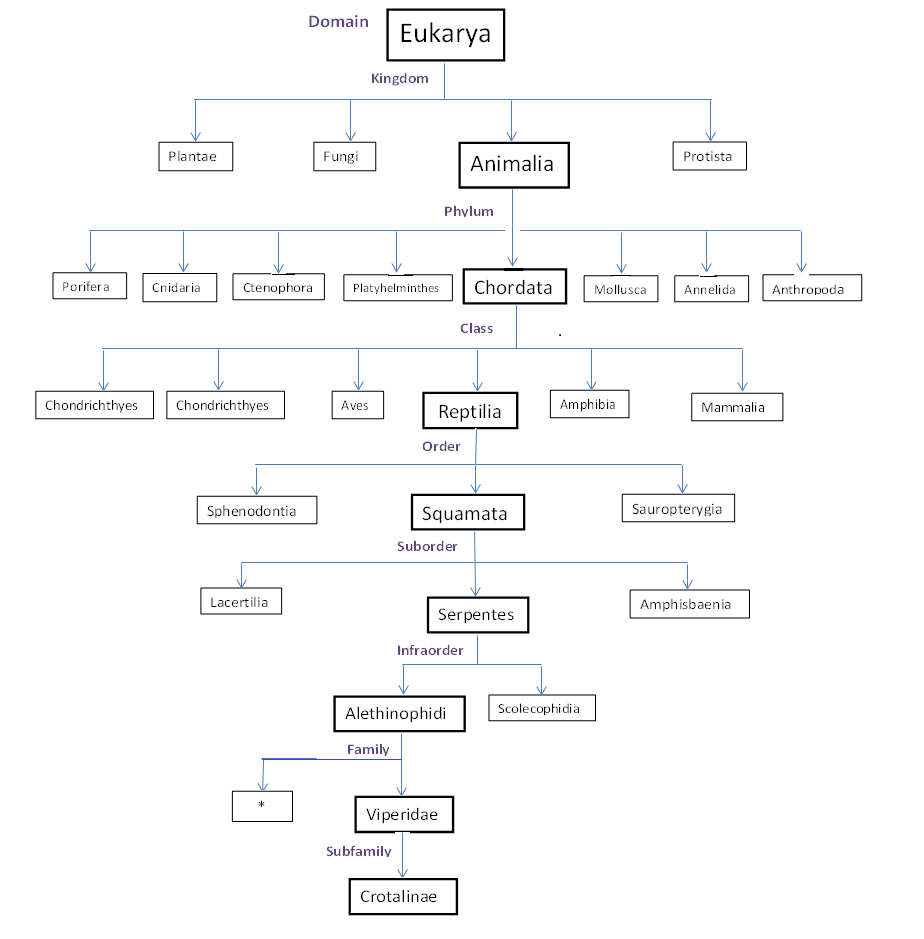
*The Alethinophidi order contains fifteen families, including the Viperidae.
Tree number 2: A look at the bamboo pit vipers closest relatives.
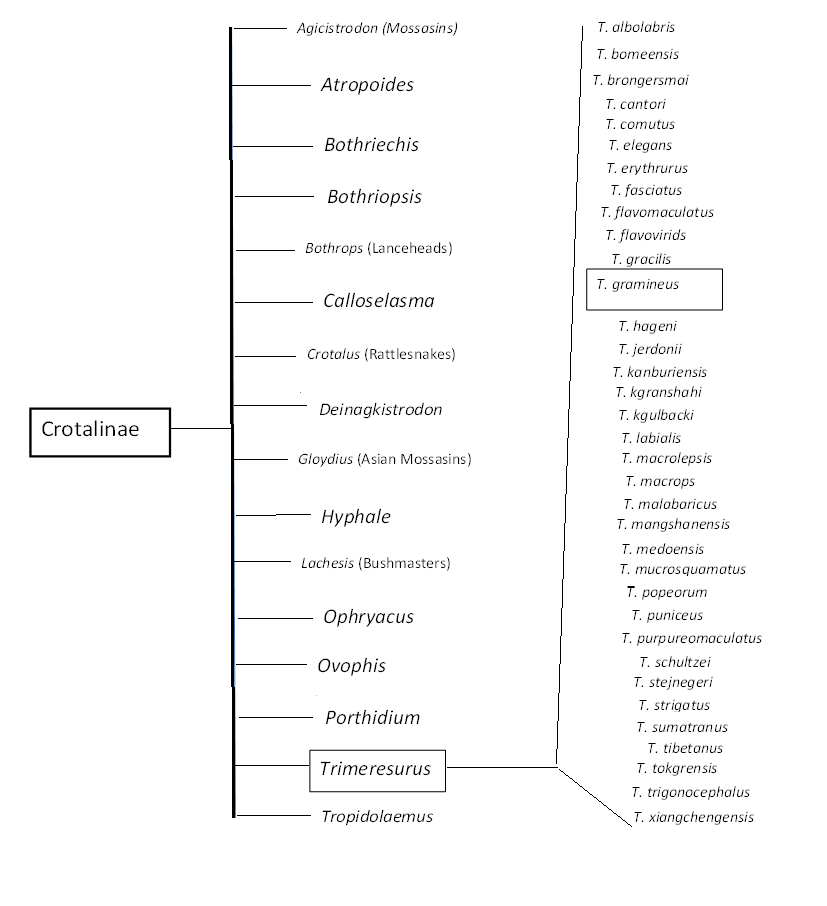
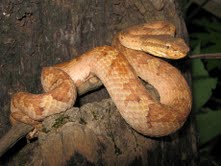
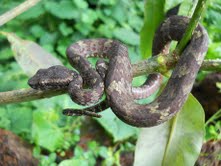 Malabar
pit viper, Trimeresurus malabaricus
Malabar
pit viper, Trimeresurus malabaricus
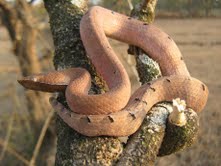
Hump nosed pit viper, Hypnale hypnale
